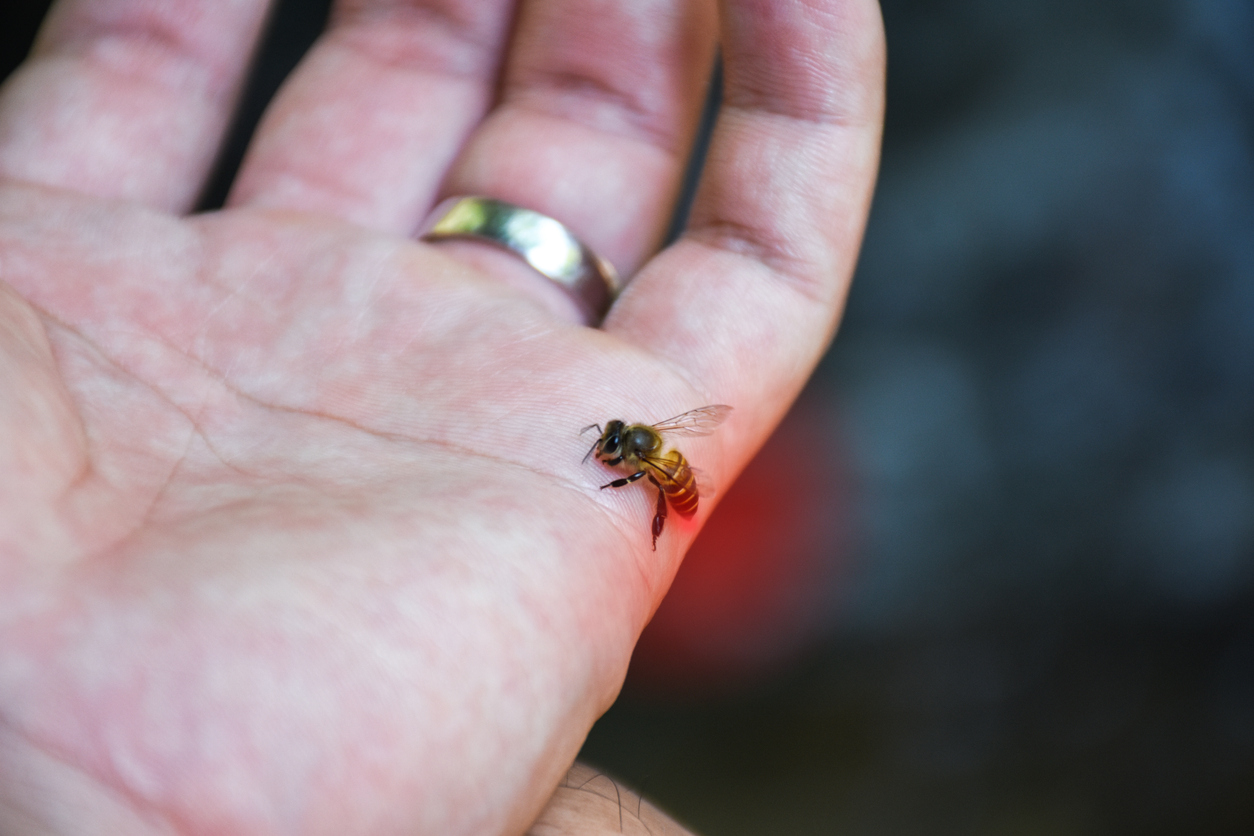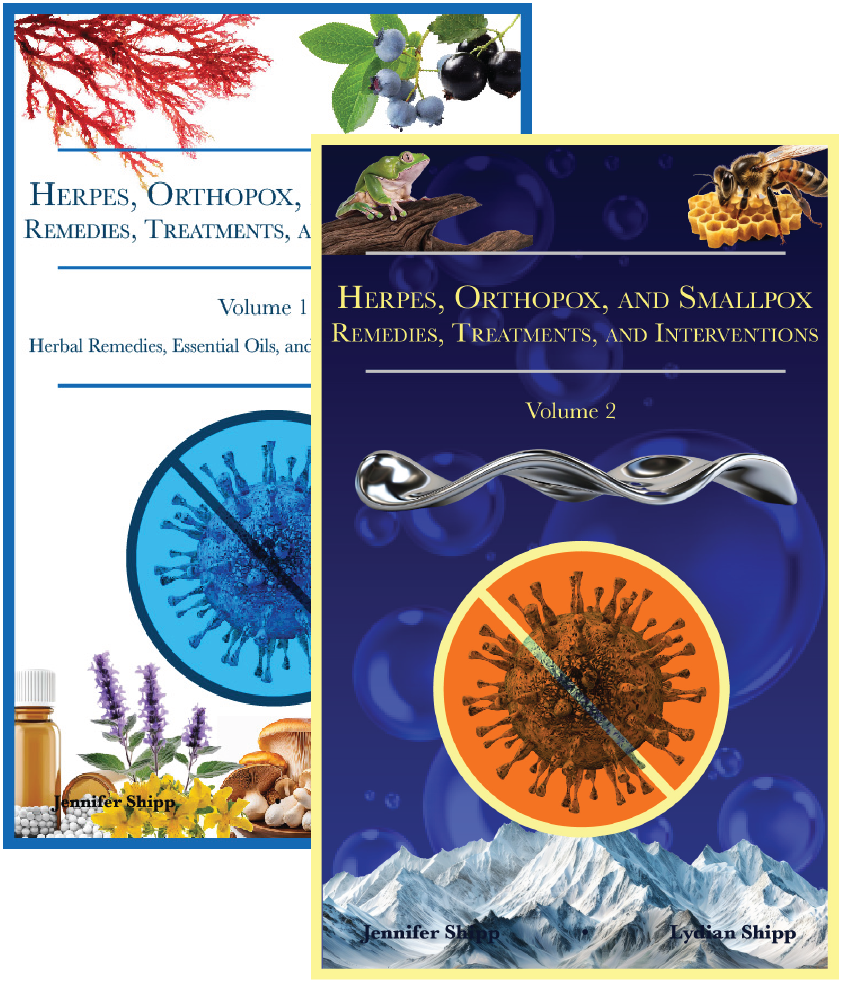
How Bee Venom Therapy Works to Cure Herpes
Bee venom is 88% water, with the other 12% consisting primarily of peptide proteins, with smaller amounts of enzymes, minerals, and amino acids. Some of the most important compounds present in bee venom are melittin, apamin, adolapin, mast cell degranulating peptide (MCDP), hyaluronidase, phospholipase A2, hydrochloric acid, formic acid, ortho-phosphoric acid, the minerals calcium, magnesium, and phosphorus, the sulfur-rich amino acids methionine and cystine, and finally, histamine, dopamine, and noradrenaline. Below is a more detailed discussion of some of the more important compounds found in bee venom:- Melittin - Melittin is one of the main compounds found in bee venom, and comprises approximately 40-60% of the actual bee venom, and is the most commonly discussed peptide when it comes to the medicinal benefits of bee sting therapy. When bee venom is administered, melittin acts as an anti-inflammatory agent, and temporarily causes an increase of cortisol production in the body. It has been found to upregulate the immune system, thus decreasing viral load and diminishing symptom severity in cases of viral infection. Melittin has been shown to have significant effects against HSV-1 and HSV-2, with its efficacy rate reaching 80% in in vitro studies. Melittin, in combination with other compounds in bee venom as well as on its own, has been found to be effective in combating edema. Both whole bee venom and melittin alone also lower the cAMP (adenosine monophosphate cycle).
- Phospholipase A2 - Phospholipase A2 is another primary compound of bee venom that acts as an immunostimulating agent and an antiviral compound. The P3bv peptide, a constituent of phospholipase A2, has been found to be especially potent against HIV, and in treating this particular virus works by preventing cellular fusion and inhibiting viral replication. Phospholipase A2 is also able to decrease blood pressure and inhibit blood coagulation (meaning it acts as a kind of blood thinner). Phospholipase A2 is said to be the main “lethal” compound in apitoxin, and is considered to be one of the most destructive components in bee venom because it is known to degrade the phospholipids of cell membranes in the body. Despite this destructive aspect, phospholipase A2 also activates arachidonic acid. The arachidonic acid is then metabolized by the cyclooxygenase cycle, leading to the production of prostaglandins that regulate the body’s immune and inflammatory responses. Both whole bee venom and isolated phospholipase have been found to specifically increase levels of prostaglandin E, especially in the skin.
- Apamin - Apamin is a polypeptide present in tiny quantities in bee venom, yet it’s unique in that it can cross the blood-brain barrier and is thus thought to possibly act on the function of the central nervous system. It temporarily increases cortisol production in the adrenal gland and is a mild neurotoxin.
- Mast Cell Degranulating Peptide (MCDP) - MCDP is a polypeptide with a similar sequence to apamin, but a different function. It makes up about 2-3% of bee venom.
- Adolapin - This is another polypeptide, which makes up about 0.5-1% of bee venom. Adolapin blocks cyclooxygenase, thus acting as an analgesic and anti-inflammatory agent in bee venom.
- Hyaluronidase - This is an enzyme that makes up 1.5-2% of bee venom. It is responsible for breaking down the hyaluronic acid in tissues, and is thus thought to treat rheumatoid arthritis by breaking down this acid in synovial bursa specifically. It is also known to dilate the capillaries.
- Protease Inhibitors - These are relatively minor compounds found in apitoxin, making up only about 2% of bee venom, but are relevant to this discussion since they act as anti-inflammatory agents. Protease inhibitors also stop bleeding.
- Methionine and Cysteine - These are 2 sulfur containing amino acids that are both present in small quantities in bee venom. Sulfur deficiency is a major problem throughout the world, and can lead to poor immune function (among other health problems). Some researchers speculate that the presence of these two amino acids in bee venom may contribute the this treatment’s efficacy in preventing and treating infectious diseases like herpes.
Histamine is the main compound in apitoxin that causes allergic reaction, and makes up 0.5-2% of the bee venom. Dopamine and noradrenaline together comprise 1-2% of apitoxin, and together act to increase the pulse rate when bee venom is administered.

Postherpetic Neuralgia Treatment: Bee Sting Therapy
Bee venom therapy is well-known for its ability to relieve chronic pain and neuralgic conditions; it has also been found to treat postherpetic neuralgia. One case study of a 51-year-old man with postherpetic neuralgia following herpes zoster infection found that the administration of 3 bee stings to the painful area completely relieved the pain on the day of the treatment. The symptoms of postherpetic neuralgia were completely relieved for 1.5 months following this initial treatment with bee venom therapy. After 1.5 months, the man’s neuralgia symptoms returned, but they presented with significantly less overall pain and with less frequency than they had prior to bee sting therapy.For the treatment of pain and inflammation during or after the onset of shingles, like in the case study described above, bee venom can be a powerful treatment option for the symptoms of herpes zoster. This is due to its anti-inflammatory and anticoagulant properties, which both contribute to pain relief as well as actual relief of inflammation.
Bee Venom Therapy for Other Viral Infections
The compounds found in bee venom have previously been found to also be effective in the treatment of the following other viral infections:- COVID-19 (and other coronavirus infections)
- Respiratory syncytial virus / RSV (and other Pneumoniae virus family infections)
- As a treatment for RSV, the melittin peptide in bee venom has significant antiviral activity against the RSV virus, without causing damage to healthy host cells or surrounding, uninfected cells.
- Vesicular stomatitis virus
- Melittin specifically works to treat VSV through direct inactivation of viral particles and inhibition of viral replication.
- Influenza A, B, C, and D viruses (and other Orthomyxoviridae family viruses, like isavirus, quaranjavirus, and thogotovirus)
- Papillomavirus / HPV
- Adenovirus
- Lumpy skin disease virus / LSDV
- Junín virus / JV (and other human arenaviruses like Lassa virus, lymphocytic choriomeningitis virus, Guanarito virus, etc.)
- Melittin, the most prolific peptide found in bee venom, has been found to reduce infectivity of the Junín virus by up to 99%, even at comparatively low doses.
Melittin for Influenza A Infection
Melittin alone has been found to effectively reduce infectivity of the Influenza-A virus, as well as to reduce plaque formation, without causing harm to healthy host cells or other surrounding healthy cells. In treating Influenza-A, melittin was not found to target viral infections before or during cell entry, but rather after the virus had already entered the cell. Melittin effectively reduced viral titers at 24 hours post-infection with the Influenza-A virus.Researchers in this study determined that melittin’s medicinal effects in the treatment of Influenza A is likely due to the peptides interactions with the phospholipid bilayer of the viral envelope through electrostatic interactions that destabilize the viral envelope and cause virolysis (viral death).
Melittin for Picornaviridae viruses
In the treatment of enterovirus infections specifically, the use of melittin in vitro has been shown to lower mRNA expression of the capsid protein VP1 by 4 times. It acts to inactivate viral particles and inhibit viral replication, as well as to reduce mRNA expression of VP1 and cytopathic effects. Melittin is thus considered to be an effective prophylactic and treatment option for diseases caused by enterovirus infection. Melittin also has shown potent virucidal activity against coxsackieviruses, without causing damage to healthy cells. As a treatment for coxsackievirus infection, melittin works by inhibiting viral replication and through inactivation of viral particles.Some examples of Picornaviridae family viruses include:
- Enteroviruses (enterovirus-71 causes hand-foot-and-mouth disease; other enteroviruses include rhinovirus and poliovirus)
- Coxsackieviruses
- Hepatoviruses (including hepatovirus A, which causes hepatitis A)
Melittin for Flaviviridae Viruses (Dengue, Yellow Fever, JEV, Zika, etc.)
Studies have found that a combination of melittin and apamin, two important peptides in bee venom, are more effective together as a treatment for bovine viral diarrhea virus (BVDV), a Flaviviridae family virus, than melittin alone. Researchers in this study thus concluded that apamin must have a potentiating effect on melittin, especially in terms of treating viral infections.Examples of Flaviviridae family viruses include:
- Dengue virus
- Japanese encephalitis virus / JEV
- Yellow fever virus
- West Nile virus
- Zika virus
- Hepatitis C virus
Melittin for HIV and Other Retroviral Infections
The melittin peptide in bee venom has been found to “peel off” the outer envelope of certain retroviruses, thus making the virus vulnerable to the body’s natural immune forces. Melittin may also act to inhibit viral replication and production in HIV-1 infected lymphoma cells by directly inhibiting intracellular viral protein production.How Bee Venom Therapy is Administered
Generally speaking, it’s recommended that you work with a qualified, experienced practitioner to receive bee venom therapy. While it is possible to self-administer bee sting therapy (and many people choose to do this, for various reasons), it’s safer to work with a practitioner in most cases, especially if you’re just starting to learn about and work with bee venom therapy. If there isn’t a specialized bee sting therapy practitioner in your area, inquire with local acupuncturists, TCM specialists, or Ayurvedic practitioners to see if these people offer bee sting therapy as well.Bee sting therapy is generally administered 3 times per week for the treatment of more serious infectious diseases like those caused by herpesviruses. It may be given at a “does” of 2-10 stings at a time, depending on individual health situation and preference; each sting contains approximately 140-150mcg of venom. Some acupuncturists or practitioners with knowledge of acupuncture may opt to administer the stings on specific acupuncture points to facilitate further healing and energetic balance (indeed, some sources indicate that this may be more effective than “randomly” placing the stings on the body).
Safety of Bee Venom Therapy
Bee venom therapy is generally considered to be safe as a treatment for all kinds of health conditions, provided that it is administered by someone trained in bee sting therapy who is fully prepared with all the necessary emergency precautions. Only about 1% of the population will consistently experience severe anaphylactic shock in response to a bee sting, but it’s essential that the practitioner you work with is prepared for this possibility. In the case that a bee sting causes anaphylactic shock or another severe allergic reaction (which can technically happen any time, no matter how many times you’ve received bee sting therapy), the practitioner should be prepared with an emergency “sting kit” that includes:- At least 1 Epi-Pen / epinephrine injection
- A syringe
- Antihistamine tablets
Patients who are new to bee sting therapy should also inquire about whether or not the practitioner they’re working with administers a “test sting” to test the allergic reaction of a new client. The “test sting” should be administered somewhere far from the vital organs (on one of the extremities, such as the legs, is ideal) and the stinger should only be left 10 seconds before being removed. Afterwards, the patient and practitioner should wait 15-20 minutes to assess whether or not there’s an allergic reaction; if there’s no allergic reaction, simply take note of any other experiences that you have physiologically or emotionally for later.
Patients who experience an allergic reaction to bee venom may still in some cases be able to receive the therapy, but they will have to work with their practitioner to become “desensitized” to the venom first.
People who receive bee venom therapy may experience different normal “side effects” after the treatment. These are temporary and will pass shortly after treatment, but it’s still important to be aware of these since they can be distressing for some people. These temporary “side effects” may include the following:
- Pain and burning at the sting site
- Redness/mild swelling at the sting site that lasts for a few days following the sting
- Itching near the sting site
- Large amounts of swelling (angioedema) around the sting site
- Minor respiratory symptoms
- Gastrointestinal discomfort, including abdominal cramps
- Weakness
- Feelings of fear that don’t seem to be related to anything in particular
- Allergic rhinitis
- Allergic conjunctivitis
- Generalized itching of the skin
None of the above are severe reactions to bee venom. A severe allergic reaction is characterized by symptoms like skin hives, swelling around the eyes, lips, tongue, and throat, difficulty breathing, mental confusion, loss of consciousness, vomiting, and slurred speech.
Contraindications for Bee Venom Therapy
People who fall into any of the groups below are contraindicated to receive bee sting therapy:- Women who are pregnant
- People with a known bee venom allergy
- Individuals who are chronically taking any of the following type of pharmaceutical medications:
- Beta blockers (metoprolol, propranolol, etc.)
- NSAIDs (ibuprofen, aspirin, diclofenac, etc.)
- Steroid drugs (dexamethasone, prednisolone, hydrocortisone, etc.)
- ACE inhibitors (zofenopril, benazepril, alacepril, etc.)
- People with certain heart problems or blood clotting disorders
Some practitioners may also advise against bee sting therapy in cases where the patient lives in an environment with a lot of mold, or has an untreated thyroid, digestive, or autoimmune condition.
Resources:







